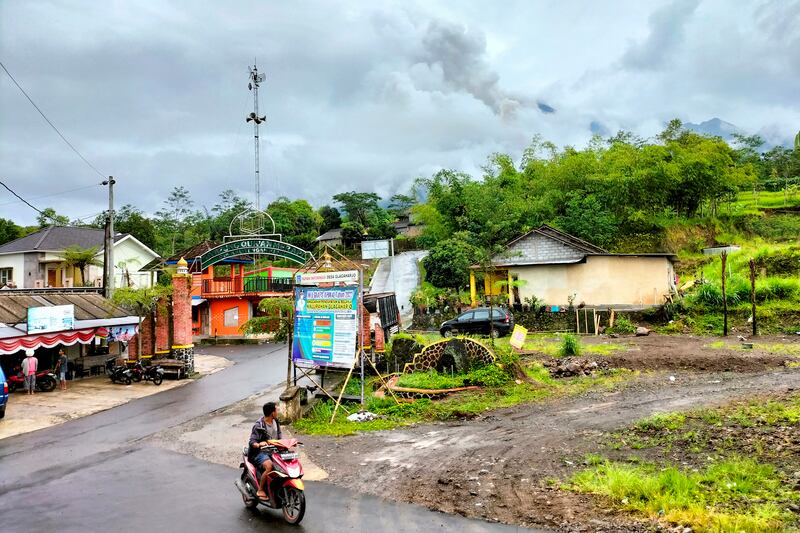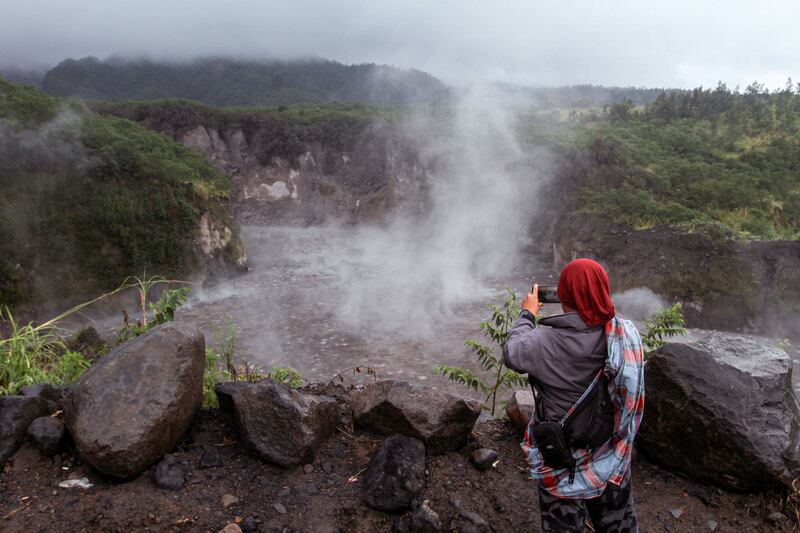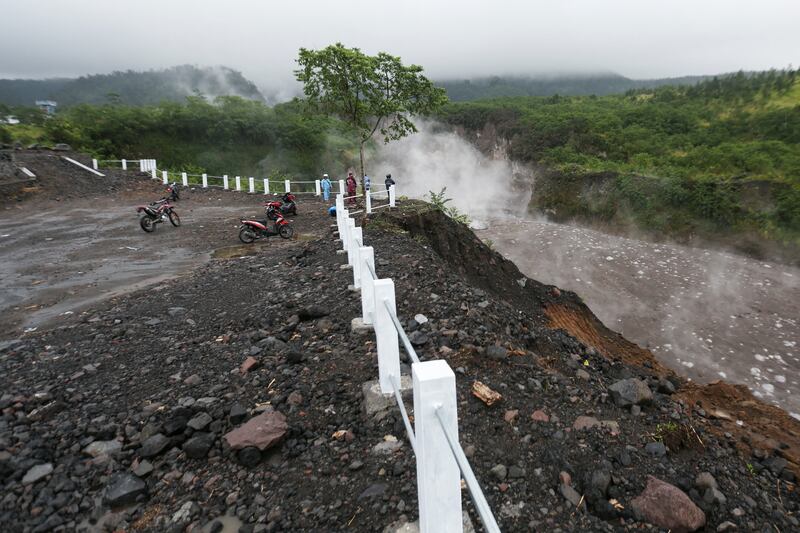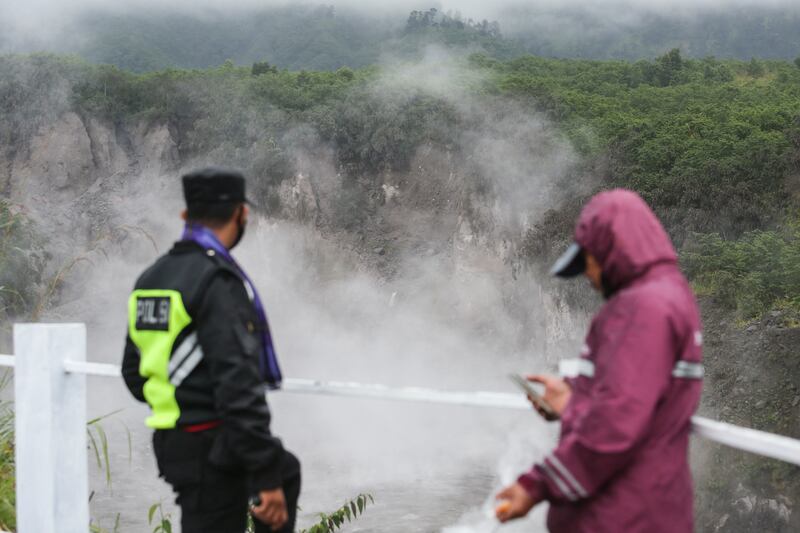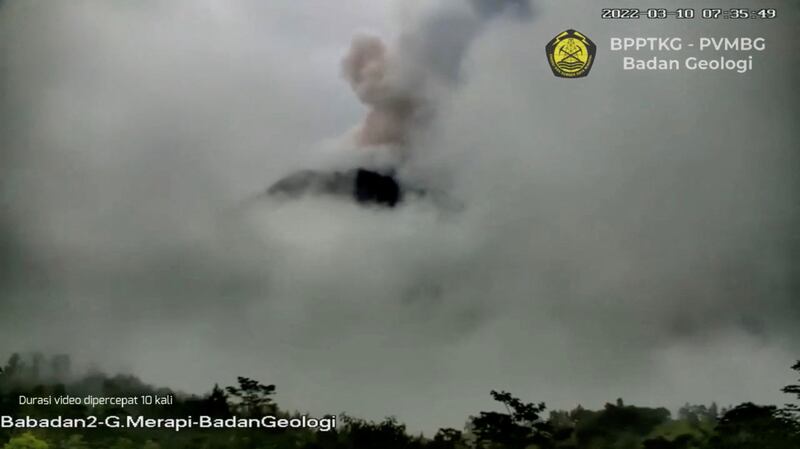Indonesia’s Mount Merapi volcano has erupted at least seven times, covering villages and towns with ash and forcing about 250 residents to flee to temporary shelters.
The volcano on the densely populated island of Java spewed avalanches of hot clouds in eruptions overnight on Thursday. No casualties were reported.
It unleashed clouds of hot ash shortly before and after midnight. Fast-moving pyroclastic flows — a mixture of rock, lava and gas — travelled up to 5 kilometres down its slopes, said the National Disaster Mitigation Agency’s representative Abdul Muhari.
The rumbling sound could be heard several kilometres away.
Mr Muhari said 253 people were taken to temporary shelters in Glagaharjo and Umbulharjo villages in Indonesia's special province of Yogyakarta and in Central Java’s Klaten district because of the dangers on Merapi.
Residents living on Merapi’s fertile slopes were advised to stay 7 kilometres away from the crater’s mouth. They were told to be aware of the danger posed by lava, Indonesia’s Geology and Volcanology Research Agency said.
Mount Merapi is the most active of more than 120 active volcanoes in Indonesia and has repeatedly erupted recently, spewing lava and gas clouds.
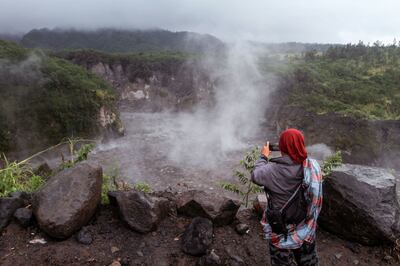
The Volcanology and Geological Hazard Mitigation Centre did not raise Merapi’s alert status, which already was at the second highest of four levels since it began erupting last November.
The 2,968-metre peak is near Yogyakarta, an ancient city of several hundred thousand people that is part of a large metro area. The city is also a centre of Javanese culture and a seat of royal dynasties going back centuries.
Merapi’s last major eruption in 2010 killed 347 people and forced 20,000 villagers to flee to safety. The volcano also erupted in January this year.
Indonesia's Mount Merapi erupts spewing lava and ash
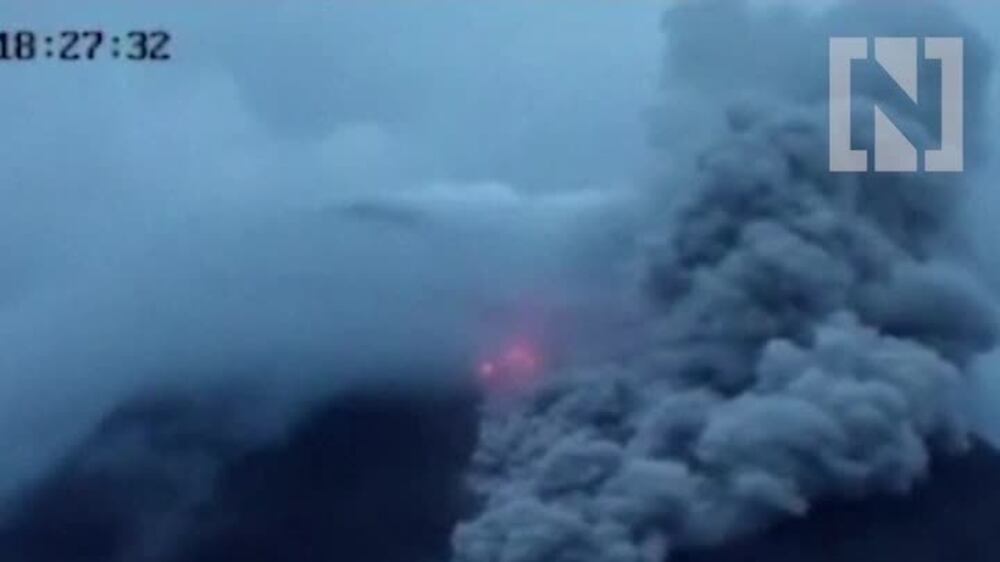
Indonesia, an archipelago of 270 million people, is prone to earthquakes and volcanic activity because it sits along the “Ring of Fire,” a horseshoe-shaped series of seismic fault lines around the Pacific Ocean.
Its last major eruption was in December, when Mount Semeru, the highest volcano on Java island, erupted with fury and left 48 people dead and 36 missing in villages that were buried in layers of hot mud.
Several of the injured had serious burns and the eruption damaged 5,200 houses and buildings.

